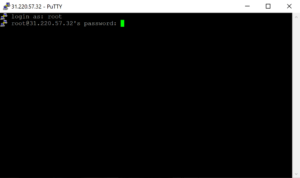
iptables is a user-space utility program that allows a system administrator to configure the IP packet filter rules of the Linux kernel firewall, implemented as different Netfilter modules. The filters are organized in different tables, which contain chains of rules for how to treat network traffic packets. iptables is the base firewall for all other firewall utilities to interface with.
iptables is used to set up, maintain, and inspect the tables of IP packet filter rules in the Linux kernel. It is typically used to allow or block specific IP addresses, protocols, or ports. It can also be used to redirect network traffic to a different destination or to log network activity.
iptables is written in C and uses the Netfilter framework, which is built into the Linux kernel. The Netfilter framework provides hooks into the network stack to allow the manipulation of network packets.
Official page of iptables: https://netfilter.org/projects/iptables/index.html
Installation
iptables is included in most Linux distributions by default. To install iptables on supported operating systems, follow the instructions below:
Ubuntu/Debian
sudo apt-get install iptables
CentOS/RHEL
sudo yum install iptables
Arch Linux
sudo pacman -S iptables
Basic iptables Commands
Here are some basic iptables commands with descriptions of what they do:
1. List existing rules
iptables -L
This command lists all the current rules in the iptables firewall.
2. Allow incoming SSH traffic
iptables -A INPUT -p tcp --dport 22 -j ACCEPT
This command allows incoming SSH traffic on port 22.
3. Block incoming HTTP traffic
iptables -A INPUT -p tcp --dport 80 -j DROP
This command blocks incoming HTTP traffic on port 80.
4. Redirect incoming traffic to a different port
iptables -A PREROUTING -t nat -p tcp --dport 80 -j REDIRECT --to-port 8080
This command redirects incoming traffic on port 80 to port 8080.
Similar Packages
There are several other firewall utilities that can interface with iptables or provide similar functionality. Some of these include:
- UFW (Uncomplicated Firewall)
- Firewalld
- Shorewall
- PF (Packet Filter)
These packages provide higher-level interfaces to iptables and may offer additional features or ease of use compared to directly manipulating iptables rules.
Example Scripts
Here are three example scripts that demonstrate the use of iptables in automation:
1. Block all incoming traffic except SSH
#!/bin/bash # Flush existing rules iptables -F # Set default policies iptables -P INPUT DROP iptables -P FORWARD DROP iptables -P OUTPUT ACCEPT # Allow incoming SSH traffic iptables -A INPUT -p tcp --dport 22 -j ACCEPT
This script flushes all existing rules, sets the default policies to drop incoming and forwarding traffic, and allows incoming SSH traffic on port 22.
2. Redirect HTTP traffic to a different server
#!/bin/bash # Flush existing rules iptables -F # Set default policies iptables -P INPUT ACCEPT iptables -P FORWARD ACCEPT iptables -P OUTPUT ACCEPT # Redirect HTTP traffic to a different server iptables -t nat -A PREROUTING -p tcp --dport 80 -j DNAT --to-destination 192.168.1.100:80 iptables -t nat -A POSTROUTING -p tcp -d 192.168.1.100 --dport 80 -j SNAT --to-source 192.168.1.1
This script flushes all existing rules, sets the default policies to accept all traffic, and redirects incoming HTTP traffic to a different server.
3. Log all outgoing traffic
#!/bin/bash # Flush existing rules iptables -F # Set default policies iptables -P INPUT ACCEPT iptables -P FORWARD ACCEPT iptables -P OUTPUT ACCEPT # Log all outgoing traffic iptables -A OUTPUT -j LOG --log-prefix "OUTGOING TRAFFIC: "
This script flushes all existing rules, sets the default policies to accept all traffic, and logs all outgoing traffic with a custom log prefix.
List of iptables Functions and Constants
| Function/Constant | Description |
|---|---|
| iptables | The main iptables command for managing firewall rules. |
| iptables-save | Saves the current iptables rules to a file. |
| iptables-restore | Restores iptables rules from a saved file. |
| iptables -L | List all current rules in the iptables firewall. |
| iptables -A | Add a rule to the end of a chain. |
| iptables -I | Insert a rule at a specific position in a chain. |
| iptables -D | Delete a rule from a chain. |
| iptables -P | Set the default policy for a chain. |
| iptables -t | Specify the table to work with (e.g., nat, filter). |
| iptables -p | Specify the protocol to match (e.g., tcp, udp). |
| iptables -s | Specify the source IP address or subnet. |
| iptables -d | Specify the destination IP address or subnet. |
| iptables -j | Specify the target action for a rule (e.g., ACCEPT, DROP). |
| iptables -i | Specify the input network interface. |
| iptables -o | Specify the output network interface. |
Conclusion
iptables is a powerful tool for configuring the IP packet filter rules of the Linux kernel firewall. It is widely used by system administrators to control network traffic and secure their systems. iptables provides granular control over incoming and outgoing traffic, allowing administrators to allow or block specific IP addresses, protocols, or ports. It can also be used to redirect network traffic to a different destination or to log network activity. iptables is written in C and uses the Netfilter framework, which is built into the Linux kernel. It is used by a wide range of organizations and individuals who rely on Linux for their networking needs.

This article incorporates information and material from various online sources. We acknowledge and appreciate the work of all original authors, publishers, and websites. While every effort has been made to appropriately credit the source material, any unintentional oversight or omission does not constitute a copyright infringement. All trademarks, logos, and images mentioned are the property of their respective owners. If you believe that any content used in this article infringes upon your copyright, please contact us immediately for review and prompt action.
This article is intended for informational and educational purposes only and does not infringe on the rights of the copyright owners. If any copyrighted material has been used without proper credit or in violation of copyright laws, it is unintentional and we will rectify it promptly upon notification. Please note that the republishing, redistribution, or reproduction of part or all of the contents in any form is prohibited without express written permission from the author and website owner. For permissions or further inquiries, please contact us.


